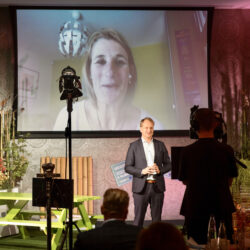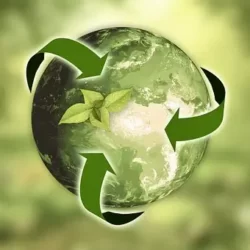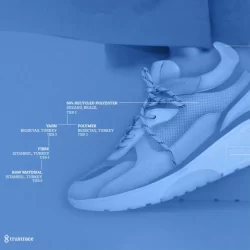Sustainable supply chains: time to get serious

The 2015 Paris Agreement on climate change has prompted many executives to announce carbon neutrality dates for their companies, typically somewhere between 2030 and 2050. Ambition levels vary by industry, but with regulatory pressure increasing and climate-conscious downstream buyers and consumers caring more about the origins of their purchases, the leeway for companies to adopt more sustainable practices is shrinking.
By Ralf W. Seifert and Yara Kayyali Elalem
For companies to reach their carbon neutrality and other sustainability goals, the key first step is being able to quantify emissions across supply chains. Doing this usually calls for dividing a business’s emissions into three “scopes”. Two covering its own emissions – Scope 1, which includes emissions released through its buildings and vehicles, and Scope 2, which records emissions from electricity, heating and cooling – and Scope 3, which includes emissions released upstream and downstream as part of the manufacturing process.
While Scope 1 and 2 emissions are at least in theory easily tracible by a company, Scope 3 emissions are almost always far more difficult to track. This matters because, as research by consultancy Oliver Wyman has shown, Scope 3 emissions can account for up to 98% of a reporting company’s total emissions, depending on the industry.
In the example of a reporting company with one or more upstream suppliers, several challenges accompany Scope 3 emission reporting and reduction. First is putting in place transparency mechanisms that allow suppliers to report their exact carbon emissions. However, there are currently no strict guidelines to Scope 3 reporting, which means many companies either fail to provide information about their emissions or use industry standard emissions in their reports. Even if upstream suppliers agree to disclose their emissions some, depending on their bargaining power, may still refuse to put in place more sustainable practices requested by their partner, while others may only agree to change their practices if they receive adequate compensation.
Beyond carbon emissions, the picture is often even bleaker for other important environmental aspects of company operations such as water usage, where data is rarely recorded in a systematic way. With climate change starting to bite – as witnessed in the water shortages now being seen across Europe – sustainability must be taken more seriously despite the many other short-term pressures companies are also facing.
Emerging trends
Several trends with regards to sustainable operations have already emerged. One is substituting “grey” energy – energy produced from polluting sources – with green energy for production and logistical operations. Another is curbing over-production to stop waste from being produced in the first place by decreasing lead times, incentivizing more local production and enabling the repurposing of excess stock.
Replacing primary materials with secondary materials is also becoming more common. An increasing number of companies are focusing on “circular” operations, where they retrieve products at the end of their lifespan and incorporate as much of their material as possible into new products. BMW, for example, has launched a “Secondary First” approach. This means that now – as Dr Thomas Becker, Vice President of Sustainability and Mobility Strategy at BMW, explains (watch from minute 15 here) – instead of having to make a case for using recycled material, “by default you have to go for secondary materials and you need to justify needing primary [ones].”
For many products, this approach presents new engineering challenges requiring large R&D investments. Tetra Pak, for example, recently announced the use of secondary material in its packaging. Doing this, however, required substantial expenditure on ensuring that the huge volume of recycled materials it needed to incorporate into its packaging could never compromise food safety.
Although making tangible progress towards more sustainable operations will require major investment and adjustments in technical capability, many of the benefits of sustainability in terms of profitability and business viability will only be achieved in the long term. However, it’s becoming apparent that sustainable practices can contribute to revenue growth, sometimes decrease costs, and help position firms in advance of regulatory requirements. A report released by Accenture and the World Economic Forum found that companies that successfully embed effective ESG (environment, social, and governance) practices generate, on average, more than 20% higher profits.
Moreover, other Accenture research revealed that 43% of 521 world-leading companies have yet to match promised ESG values with reported results. As Anke Hampel, Global Innovation and Sustainability Director of Tetra Pak, notes (from minute 47 here): “If you check where the sustainability department in a company is, it also tells you a lot of where the company stands in terms of making it part of the core of the business or not.” A useful indicator about whether a company is genuinely committed towards being carbon neutral or just wants to present a better image to the world is where it puts key sustainability responsibilities: under communications and marketing teams, or in operations such as procurement.
Putting things together
To make progress on sustainability, executives need to boost sustainability accounting across their value chains. The most important steps include:
- Establish transparency across all stakeholders in the value chain: Supply-chain transparency allows a company to see the situation faced by all parties involved in the production of its goods. Using the information this reveals, stakeholders can then align and synchronize activities to reach common sustainability goals. For example, bigger firms can educate smaller suppliers on sustainability practices and commit to large volumes when sustainability expectations are met or share the additional cost required to put those standards in place.
- Standardize their Scope 1, 2 and 3 measurements: Standardizing measurements of Scope 1 and 2 emissions is straightforward. However, with no reporting standards for Scope 3, companies must spend a lot of time obtaining exactly what is needed from their upstream and downstream partners, who may not be able to supply the data required. Standardized measurements for all scopes would save time and deliver the exact data required.
- Report and reduce emissions across Scope 1, 2, and 3: The GHG Protocol advises all companies to report on their Scope 1 and 2 emissions, yet states that Scope 3 emissions are optional to report, even though these may comprise the biggest share of their emissions. While many companies have already started reporting Scope 3 emissions, this must be made mandatory for all companies.
- Overcome the data challenges that come with sustainability accounting: Apart from transparency and standardized reporting, companies should have a centralized system for reporting and analyzing emissions from all sources. Digitalizing data collection and processing can help overcome this challenge.
- Embed sustainability in day-to-day activities: Making sustainability part of a company’s culture will lessen potential conflicts of priorities with other strategic imperatives. If sustainability measures are key performance indicators (KPIs) that all departments must report on, a company can sync its sustainability practices across its operations.
Getting serious about sustainability is both a leadership challenge and a supply chain challenge. Having senior supply-chain leaders on your management team that can handle this has to be a top priority for all businesses.
This article was first published by IMD on July 21, 2022.
Ralf W. Seifert is Professor of Operations Management at IMD. He directs IMD’s new Digital Supply Chain Management program, which addresses both traditional supply chain strategy and implementation issues as well as digitalization trends and new technologies.
Yara Kayyali Elalem holds a bachelor’s degree in Civil and Environmental Engineering and a master’s degree in Management, Technology, and Entrepreneurship. Currently, she is pursuing her PhD in the Technology and Operations Chair at EPFL. Her PhD research focuses on demand forecasting for new products and operational flexibility strategies for sustainable sourcing.
Related posts:
-
Janet Godsell: “Use your authority and become a pathfinder”
How can we make our supply chains sustainable? That’s the question companies must answer over the next 15 years. “If…
Read more -
Feasibility of many companies’ sustainability ambitions is questionable
Despite the fact that countless companies have pledged to become more sustainable, few of them appear to be in a…
Read more -
Adidas adopts new supply chain transparency solution
TrusTrace, a Software-as-a-Service (SaaS) company with a platform for product traceability and supply chain transparency within fashion and retail, has…
Read more









